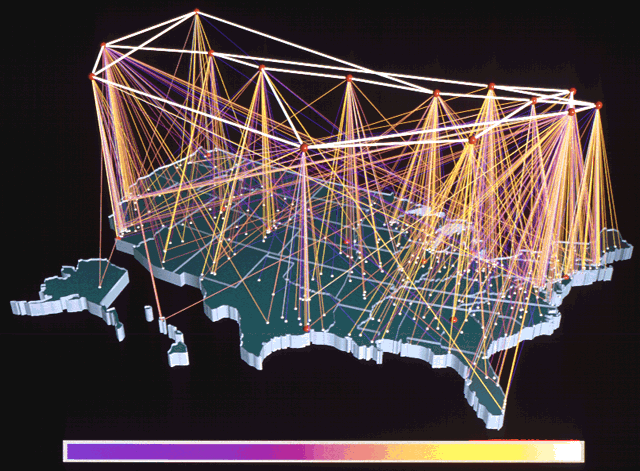NSFNET growth until 1995
Donna Cox and Robert PattersonThe National Center for Supercomputing Applications (NCSA),
National Science Foundation's Supercomputer Centers Program
University of Illinois at Urbana-Champaign
URL: http://www.ncsa.illinois.edu
NSFNET was a series of networks coordinated by NFS, created to serve research and education purposes. Based on ARPANET protocols, NFSNET served as the backbone of a growing internet up until April 1995. The role of the backbone has since been handed over to several commercial carriers, dissolving the notion of a single national Internet backbone.
| Visualization Thumbnail | Analysis | ||||
|---|---|---|---|---|---|
|
|||||
| Click Image for Full-Size Visualization | Back to Gallery |



